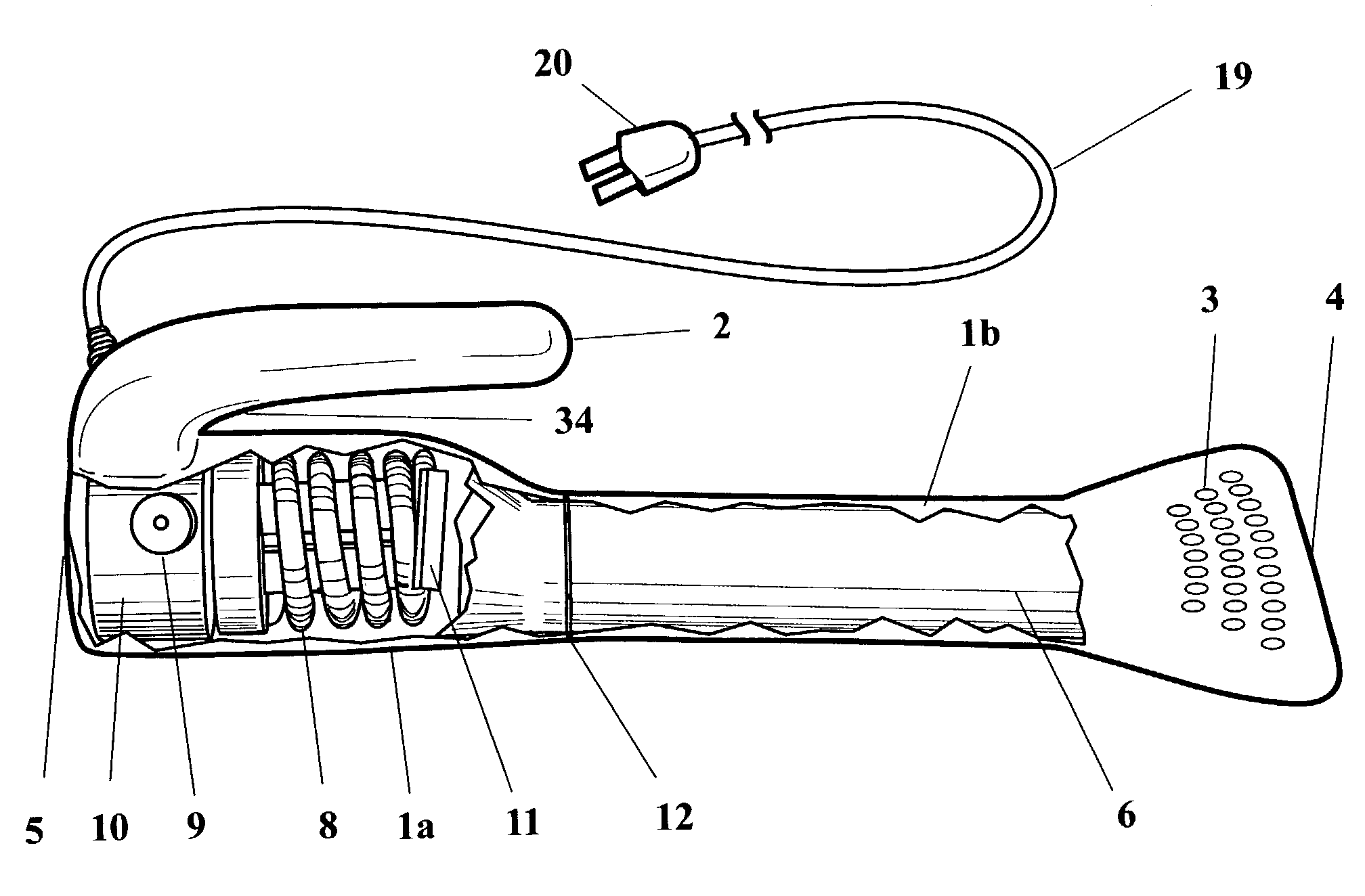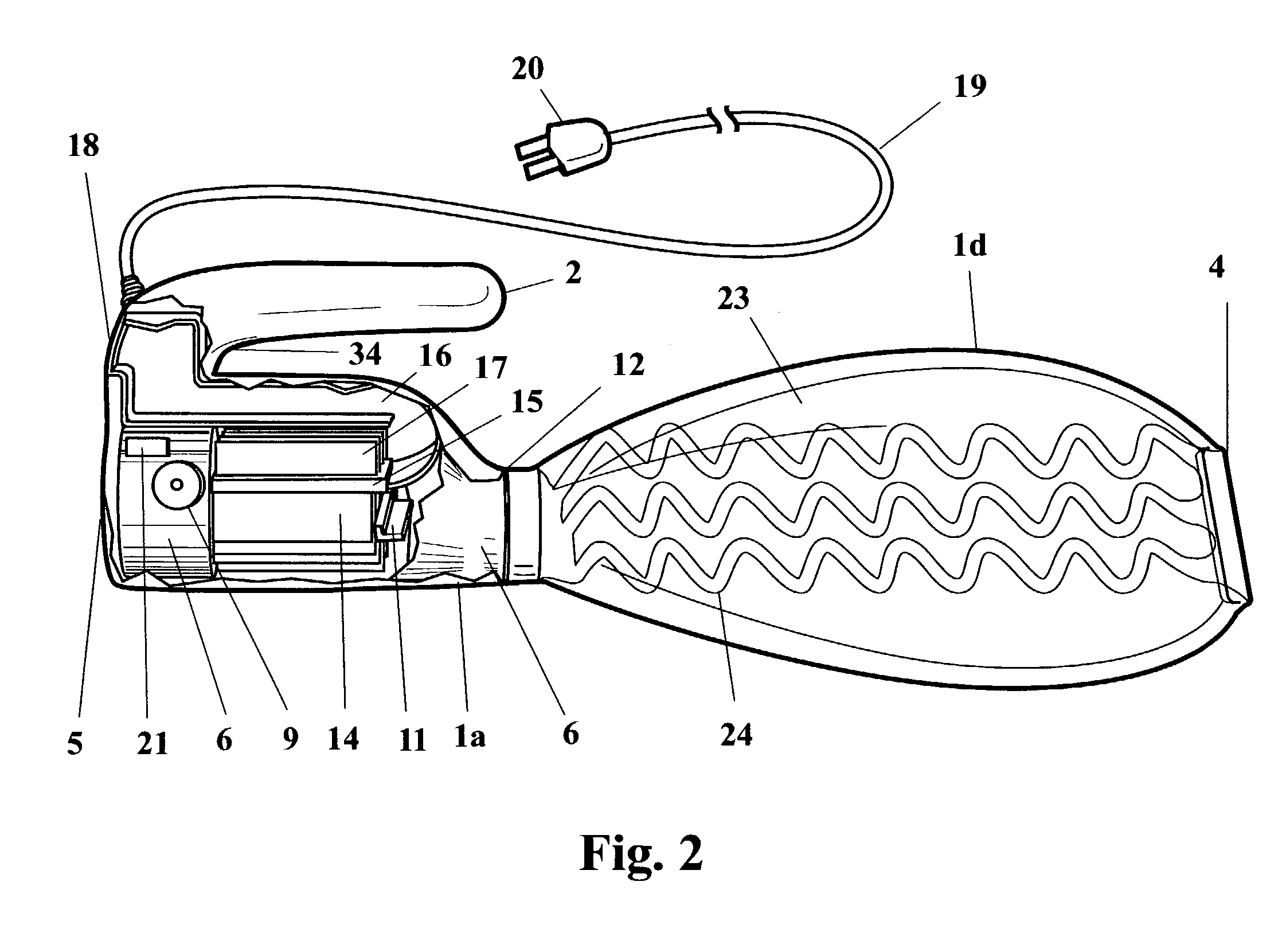Forced air bed warmer/cooler
a bed and cooler technology, applied in the field of bed warmers and bed coolers, can solve the problems of inconvenient use, shock or even electrocution, cumbersome and time-consuming device setting up, etc., and achieve the effect of enhanced and highly efficient warming and/or cooling of the bed environment, easy movement, and easy creation of pre-heating
- Summary
- Abstract
- Description
- Claims
- Application Information
AI Technical Summary
Benefits of technology
Problems solved by technology
Method used
Image
Examples
Embodiment Construction
[0085]Referring to FIG. 1, a preferred embodiment of the invention is presented. This embodiment is designed to produce heating only and preferably comprises two main sections: heating element section 1a and air delivery section 1b which lock together via bayonet type joint 12. Heating element section 1a is generally cylindrical, with air intake 5 on one (rear) end and forward-projecting handle 2 attached at the top rear. The front of elongated air delivery section 1b is flattened into a flare that terminates in primary air exit 4. Patterns of holes on the top and bottom of the front flare serve as secondary air exits 3, providing auxiliary air exits for the device or alternative exits in the event that primary exit 4 becomes obstructed. Both heating element section 1a and air delivery section 1b are preferably constructed of a plastic, more preferably an injection-molded thermoplastic.
[0086]Mounted inside heating element section 1a are the following: high efficiency fan or other de...
PUM
 Login to View More
Login to View More Abstract
Description
Claims
Application Information
 Login to View More
Login to View More - R&D
- Intellectual Property
- Life Sciences
- Materials
- Tech Scout
- Unparalleled Data Quality
- Higher Quality Content
- 60% Fewer Hallucinations
Browse by: Latest US Patents, China's latest patents, Technical Efficacy Thesaurus, Application Domain, Technology Topic, Popular Technical Reports.
© 2025 PatSnap. All rights reserved.Legal|Privacy policy|Modern Slavery Act Transparency Statement|Sitemap|About US| Contact US: help@patsnap.com



